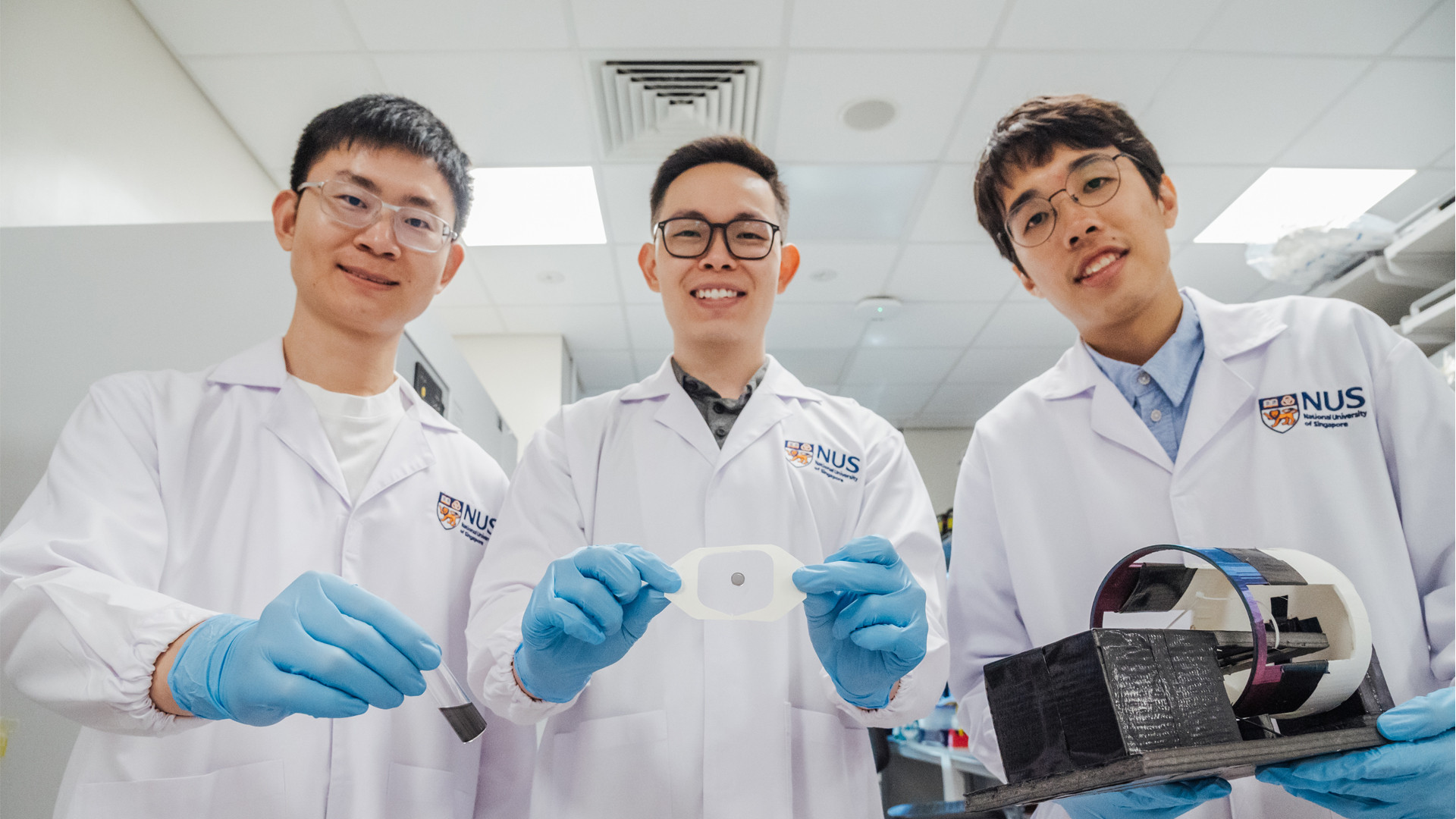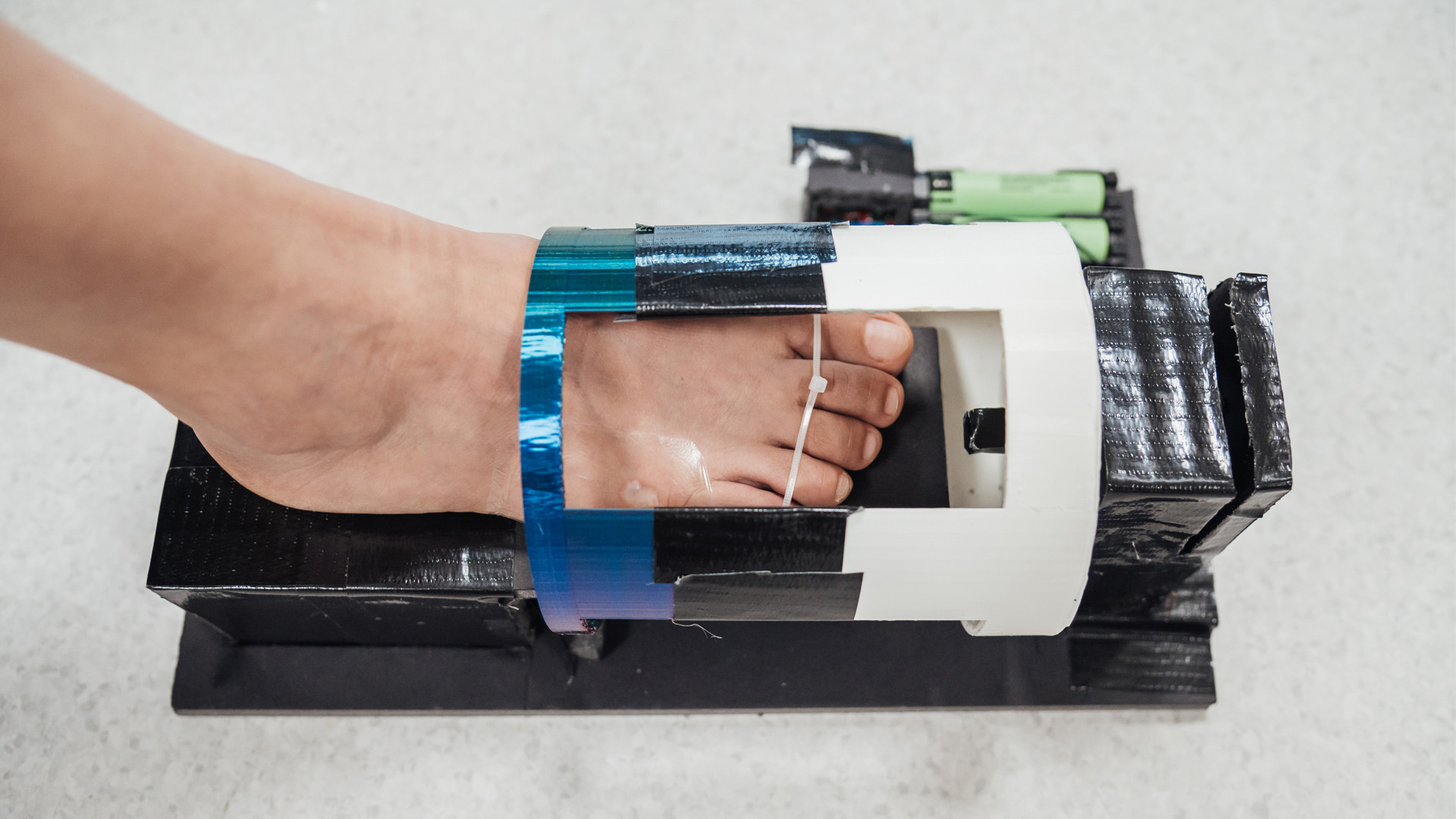SINGAPORE – Addressing the pressing global health concern of chronic diabetic wounds, researchers from the National University of Singapore (NUS) have unveiled a pioneering magnetic gel. This gel is designed to expedite the healing of diabetic wounds, potentially reducing the risk of severe complications like limb amputations.
Innovation at the Forefront
The magnetic gel, a first in cell therapy, not only promotes rapid wound healing but also enhances overall wound health, minimizing the chances of recurrence. Assistant Professor Andy Tay, a central figure in the research, showcased a plaster infused with this magnetic gel. Alongside him, Dr. Shou Yufeng demonstrated the device used for magnetic stimulation, while Dr. Le Zhicheng presented the gel in its liquid state.
Addressing a Global Health Challenge
Diabetic patients, due to their compromised wound-healing abilities, frequently suffer from chronic wounds that are notoriously slow to heal. Such wounds can lead to severe infections and, in extreme cases, necessitate limb amputations. The NUS team’s innovative gel aims to address this challenge by accelerating the healing process, thereby reducing the risk of amputations.
A Comprehensive Approach to Wound Healing
The treatment involves a bandage loaded with a hydrogel containing healing skin cells and magnetic particles. To optimize therapeutic outcomes, an external wireless magnetic device activates these skin cells, speeding up the healing process. Preliminary lab tests have indicated that this treatment when paired with magnetic stimulation, can heal diabetic wounds up to three times faster than traditional methods.
Beyond Diabetic Wounds
While the primary focus has been on diabetic foot ulcers, this technology holds promise for treating a variety of complex wounds, including burns. Assistant Professor Tay emphasized the proactive role of this innovative dressing in wound healing, contrasting it with conventional dressings that merely prevent further deterioration.
Collaborative Research and Future Directions
This groundbreaking research, detailed in a paper published in the scientific journal “Advanced Materials” on 8 September 2023, was a collaborative effort involving multiple institutions, both local and international. The NUS team has been working on this project since 2021 and has filed a patent for their innovation.
A Potential Game-Changer in Wound Management
The magnetic wound-healing gel, while primarily designed for diabetic wounds, has the potential to revolutionize the treatment of other complex wounds. The team is currently conducting further tests to enhance the gel’s effectiveness and is collaborating with clinical partners to test its efficacy on diabetic human tissues.
Assistant Professor Francis Wong Keng Lin, a Consultant from the Department of Orthopaedic Surgery at Sengkang General Hospital, who was not part of the study, commented on the significance of advancements in wound healing technologies. He highlighted the importance of such innovations in improving the healing journey of diabetic foot patients, ultimately enhancing their quality of life.
Reference: NUS News – Innovative Magnetic Gel that Heals Diabetic Wounds Three Times Faster




